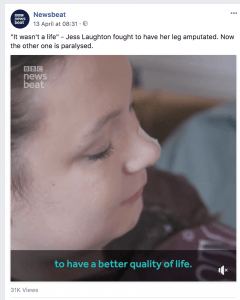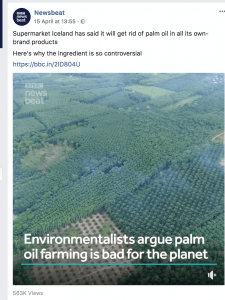There are many styles in which we can produce our short form video, the first of these is demonstrated via BBC Newsbeat which is radio 1’s own news service and aimed at the same audience.
For example in this video by Newsbeat, there is no auditory element to it, with all of the information coming from the subtitles below the images. Furthermore, the images that are used in the video are from stock sites or elsewhere with no actual ‘video’ element being included within it. The advantages to this are that is easy to produce the video as no content needs to be recorded itself and the images can be sourced from elsewhere. However, the disadvantages to this are that it can be relatively unengaging without any audio element apart from music and stock photos are as interesting to watch compared to ‘normal’ video content.
The next type of video is also made by Newsbeat with this being a mixture of the first method an another with them utilising stock footage with subtitles and then filmed parts of an interview itself with subtitles underneath both sections of the video. The obvious advantages of this method is that it allows the story to be explained through the initial photos and accompanying text before the video of people being interviewed is introduced and people fully grasp the story. The disadvantages are similar to that the above method with it again being fairly static due to it mostly being stock images or video mixed with an ordinary interview that has taken place.

Next is a full-on video of an interview taking place, such as the more traditional TV type, with a lot of cutaways, the only difference is the use of subtitles to help convert the story to work on social media. The advantages of this are that it has more weight due to it being a lot more content heavy as they are normally longer. The disadvantages though are that these take more time to produce, and don’t normally have as much audience retention due to being longer.

In regards to what methods we should be using, I believe that both two would work well for our audience as they are more visual than others and have better content within them than other methods. However it also does rely on the content, it also noticeable that in Newsbeat’s videos they square meaning that they can be consumed more easily on phones, a point that we must consider for our audience and I believe we should be implementing this.
